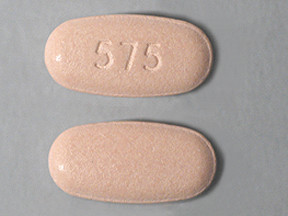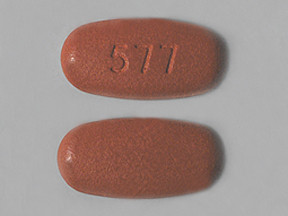SITAGLIPTIN/METFORMIN - ORAL
PHONETIC PRONUNCIATION: (sit-a-GLIP-tin/met-FOR-min)
COMMON BRAND NAME(S): Janumet
GENERIC NAME(S): sitagliptin phosphate/metformin HCl
Uses
USES: This combination medication is used with a proper diet and exercise program and possibly with other medications to control high blood sugar. It is used in patients with type 2 diabetes. This product contains 2 medications. Sitagliptin works by increasing levels of natural substances called incretins. Incretins help to control blood sugar by increasing insulin release, especially after a meal. They also decrease the amount of sugar your liver makes. Metformin works by helping to restore your body's proper response to the insulin you naturally produce. It also decreases the amount of sugar that your liver makes and that your stomach/intestines absorb. Controlling high blood sugar helps prevent kidney damage, blindness, nerve problems, loss of limbs, and sexual function problems. Proper control of diabetes may also lessen your risk of a heart attack or stroke.
How to use SITAGLIPTIN/METFORMIN - ORAL
HOW TO USE: Read the Medication Guide provided by your pharmacist before you start using sitagliptin/metformin and each time you get a refill. If you have any questions, ask your doctor or pharmacist. Take this medication by mouth as directed by your doctor, usually twice a day with meals. Drink plenty of fluids while taking this medication unless otherwise directed by your doctor. The manufacturer directs not to split/break/cut the tablet before taking it. However, many similar drugs (immediate-release tablets) can be split/cut. Follow your doctor's directions on how to take this medication. The dosage is based on your medical condition, response to treatment, and other medications you may be taking. Be sure to tell your doctor and pharmacist about all the products you use (including prescription drugs, nonprescription drugs, and herbal products). To reduce your risk of side effects (such as upset stomach), your doctor may direct you to start this medication at a low dose and gradually increase your dose. Follow your doctor's instructions carefully. Take this medication regularly in order to get the most benefit from it. Remember to use it at the same times each day. If you are already taking another diabetes drug (such as pioglitazone), follow your doctor's directions carefully for stopping/continuing the old drug and starting this medication. Carefully follow the medication treatment plan, meal plan, and exercise program your doctor has recommended. Check your blood sugar regularly as directed by your doctor. Keep track of the results, and share them with your doctor. Tell your doctor if your blood sugar measurements are too high or too low. Your dosage/treatment may need to be changed.
Side Effects
Precautions
Interactions
Overdose
Images
Reviews
Faq for SITAGLIPTIN/METFORMIN - ORAL
Sitagliptin/Metformin is used to control high blood sugar levels in patients with type 2 diabetes. It is specifically prescribed for individuals who have not achieved adequate blood sugar control with diet and exercise alone.
Sitagliptin/Metformin is a combination medication that works by increasing the levels of certain natural substances that lower blood sugar. It also decreases the amount of sugar produced by the liver and improves the body's response to insulin.
Common side effects of Sitagliptin/Metformin include diarrhea, upset stomach, nausea, vomiting, stomach pain, headache, and cold symptoms such as stuffy nose, sneezing, or sore throat. These side effects are usually temporary and may subside with continued use.
Sitagliptin/Metformin is typically taken orally with meals to reduce stomach upset. It is important to follow the dosage instructions provided by your doctor and not exceed the recommended dose. Regular blood sugar monitoring is also essential.
Sitagliptin/Metformin can be used as a single therapy or in combination with other diabetes medications. It is commonly prescribed alongside lifestyle modifications such as diet and exercise to achieve optimal blood sugar control.
If you miss a dose, take it as soon as you remember. However, if it is close to the time for your next dose, skip the missed dose and continue with your regular dosing schedule. It is important not to take double doses to compensate for a missed one.
Patients with certain medical conditions such as kidney or liver disease, heart failure, or allergies to Sitagliptin or Metformin should inform their healthcare provider before starting this medication. It is also important to disclose all current medications, including over-the-counter drugs and supplements, to your doctor to avoid any potential drug interactions.
The effects of Sitagliptin/Metformin in controlling blood sugar levels can usually be observed within 2-3 weeks of starting the treatment. However, the full benefits may take several weeks to become apparent.
Sitagliptin/Metformin is not likely to cause hypoglycemia on its own. However, low blood sugar may occur if the medication is used in combination with other diabetes medications that can lower blood sugar levels. It is important to monitor blood sugar levels regularly and consult your doctor if you experience any symptoms of hypoglycemia such as dizziness, sweating, or rapid heartbeat.
Warning
WARNING: Rarely, too much metformin can build up in the body and cause a serious (sometimes fatal) condition called lactic acidosis. Lactic acidosis is more likely if you are an older adult, if you have kidney or liver disease, dehydration, heart failure, heavy alcohol use, if you have surgery, if you have X-ray or scanning procedures that use iodinated contrast, or if you are using certain drugs. For some conditions, your doctor may tell you to stop taking this medication for a short time. Ask your doctor or pharmacist for more details. Stop taking this medication and get medical help right away if you have any symptoms of lactic acidosis, such as unusual tiredness, dizziness, severe drowsiness, chills, blue/cold skin, muscle pain, fast/difficult breathing, slow/irregular heartbeat, or stomach pain with nausea/vomiting/diarrhea.
Disclaimer
IMPORTANT: HOW TO USE THIS INFORMATION: This is a summary and does NOT have all possible information about this product. This information does not assure that this product is safe, effective, or appropriate for you. This information is not individual medical advice and does not substitute for the advice of your health care professional. Always ask your health care professional for complete information about this product and your specific health needs.


No Reviews Yet